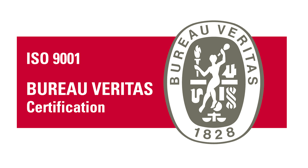Article

Need to adapt the description of a European Patent application… or not?
The end of a headache for applicants?
In a decision T 1989/18 of December 16, 2021, the Board of Appeal 3.3.04 of the EPO disapproved a position that the Examining Divisions have adopted in a more and more stringent way for a few years.
The Board has analyzed in detail different provisions (Article 84, Rules 42(1)c) and 48 EPC) on which the Examining Divisions were used to relying to require patent applicants to remove from the description any disclosure of embodiments that are no longer covered by the claims or to prominently mark such disclosure as relating to "embodiments not covered by the claims".
The recent decision takes a completely different view. The Board concludes the analysis by indicating that none of the cited EPC provisions can serve as a legal basis for refusing a European patent application in which the description is not adapted to remove unclaimed embodiments or mark them as such.
This decision is received as good news by European patent applicants and their representatives.
The European Patent Office (EPO) has insistently taken the view that it would be the duty of the applicant to adapt the description of a European patent application whenever it includes the disclosure of embodiments that are not, or no longer, covered by the claims. The EPO examiners generally require that embodiments not falling under the scope of the claims be deleted from the description or prominently marked "embodiment not covered by the claims".
The case is quite frequent. Most of the time, the applicant first tries relatively broad claims and the examination process often leads to narrowing the claim scope, for example due to collision with prior art cited in the European search report. Embodiments that were originally disclosed to support the broader scope of the claims may fall out of the scope of the claims that are eventually allowed.
However, it is not comfortable for a patent applicant to admit, and thus make it public record, that a certain embodiment is not covered by the claims. Such an admission may cause severe problems down the road if the patent needs to be enforced regarding competitors’ products or activities.
When interpreting the scope of a European patent claim, the Court should rely on Article 69(1) EPC (“The extent of the protection conferred by a European patent (..) shall be determined by the claims. Nevertheless, the description and drawings shall be used to interpret the claims.”) and its Protocol on Interpretation. When proposing a broad claim construction, it is clearly desirable for the patentee to have a variety of embodiments in the description as potential sources of interpretation. On the other hand, deleting an embodiment from the description, or marking it as unclaimed, may help the alleged infringer to propose a narrower claim construction to avoid the infringement assertion. The alleged infringer may also point out similarities of his product or activity with the deleted embodiment.
Therefore, most European patent representatives consider that what the EPO Examining Divisions require is not favorable to their clients’ interests.
In the revision of the Guidelines for Examination applicable as from March 1, 2021, more emphasis was added in section F-IV-4.3(iii) on the applicant’s duty. The examiners were instructed to object to certain loopholes that the practitioners had developed, for example inserting boilerplate statements such as “embodiments not falling under the scope of the appended claims are to be considered merely as examples suitable for understanding the invention”, or changing the wording “invention” to “disclosure” or the wording “embodiment” to “example”, “aspect” or similar.
To support the requirement in the Guidelines, the EPO administration relied on a previous decision T 1808/06 of the Board of Appeal 3.3.09, dated February 14, 2008. In that decision, the Board stated that “any disclosure in the description and/or drawings inconsistent with the amended subject-matter should normally be excised”, and that “reference to embodiments no longer covered by amended claims must be deleted, unless these embodiments can reasonably be considered to be useful for highlighting specific aspects of the amended subject-matter. In such a case, the fact that an embodiment is not covered by the claims must be prominently stated”. However, this was an opposition case in which the parties were not arguing about that. The issue at hand was not clarity of the claim language (Article 84 EPC) or whether an amendment had to be done in the description, but whether a certain way of amending the description gave rise to an extension of the subject-matter beyond the content of the application as filed, in violation of Article 123(2) EPC.
In the more recent decision T 1989/18, the Board 3.3.04 was reviewing the refusal of an application on the ground that the description did not comply with the requirements of Article 84 EPC because “the subject-matter disclosed on page 9, line 23 to page 10, line 18, was broader than the subject-matter of the allowable claim 17 which concerns the expression vector of the invention”. The Board directly looked at the question of whether clarity of a claim is impacted if the description includes subject matter which is not claimed.
In its fully reasoned decision, the Board answered by the negative.
Article 84 EPC reads: “The claims shall define the matter for which protection is sought. They shall be clear and concise and be supported by the description”. In T 1989/18, the Board dismissed it as a proper legal basis for the refusal, considering that:
- the claims must be clear in themselves when being read with the normal skills, but not with any knowledge derived from the description;
- while it is inadmissible to claim any subject-matter which is not described, if the claims are clear in themselves and supported by the description, their clarity is not affected if the description contains subject-matter which is not claimed.
The Board went further, by also analyzing whether other provisions of the Implementing Regulations of the EPC could be a basis for the refusal, namely Rule 42(1)c) (“The description shall […] disclose the invention, as claimed, in such terms that the technical problem, even if not expressly stated as such, and its solution can be understood, and state any advantageous effects of the invention with reference to the background art”) and Rule 48(1)c) (“The European patent application shall not contain […] any statement or other matter obviously irrelevant or unnecessary under the circumstances”).
The Board considered that Rule 42(1)c) cannot be, generally speaking, the legal basis for requiring the applicant to bring the description in line with claims intended for grant, and to remove passages of the description that disclose embodiments which are not claimed. It found that the passages objected to by the Examining Division to refuse the application did not impair the understanding of the technical problem and its solution.
Regarding, Rule 48, the Board looked at the Travaux Préparatoires of the EPC and considered that it was not the lawmakers’ intention to make it a ground for refusal.
At present, it is not known whether the EPO Examining Divisions will follow the clear and reasoned opinion given by the Board of Appeal. It remains to be seen if Examining Divisions will keep on challenging applicants on the issue and, if so, whether the case law will remain consistent with T 1989/18. If the EPO administration wants to insist on the current version of the Guidelines F-IV-4.3(iii), its President may try to take the issue to the Enlarged Board of Appeal, due to discrepancy with statements made in T 1808/06.
Anyway, decision T 1989/18 may be relied on by applicants who disagree with an Examining Division asking to delete embodiments from their description, or to mark them as unclaimed, for clarity reasons.
The decision of the Board of Appeal is applicant-friendly, while the current Guidelines, at F-IV-4.3(iii), are not.




























